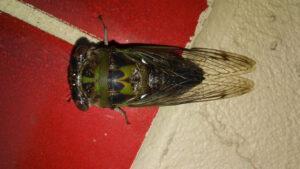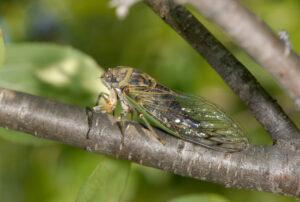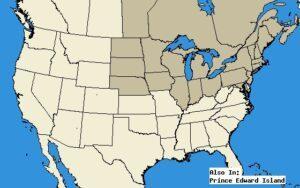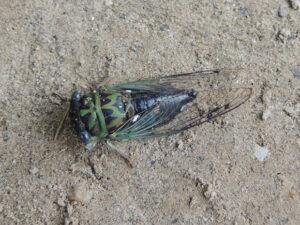Dog-day Cicada (Neotibicen canicularis)
Updated on
17/11/2022The dog-day cicada is a species of annual cicada that is also known by the names dog-day harvestfly and heatbug. Its name is derived from the dog days of summer (July-August) as the insect is associated with the hot and humid summer days. It has an almost deafening song that can be heard day and night.
Scientific Classification
- Class:Insecta
- Order:Hemiptera
- Suborder:Auchenorrhyncha
- Family:Cicadidae
- Genus:Neotibicen
- Species:N. canicularis
Conservation Status
Description
The dog-day cicada is mostly black with green marks. There is a gold mark on its thorax shaped like two V’s. Its body size is 27-33 mm, and the wingspan can reach 82 mm. The semi-transparent wings exhibit green veins that are especially visible near the base. It has bulging eyes.
Distribution: The Great Plains ofCanada and the United States, New England, the Great Lakes region, and the midwestern United States.
Habitat: Mixed and deciduous woods.
Do They Bite/Sting: No.
Lifespan: 2-3 years.
Predators: Mammals, fish, squirrels, spiders, birds, and snakes
Behavior and Characteristics
Diet
The nymphs feed on tree root sap. The adults may suck juices from soft twigs but don’t feed on leaves. They are more focused on mating.
Call and Sound
This species has a characteristic call. Its song is a loud and high-pitched whine resembling the sound of a power saw cutting wood. It lasts for about 15 seconds before trailing off in the end.
Life Cycle
The insect passes through 3 stages of its life. They are the egg, nymph, and adult.
1. Egg Stage
The females use a saw-like structure (ovipositor) to insert egg clusters into small branches and twigs.
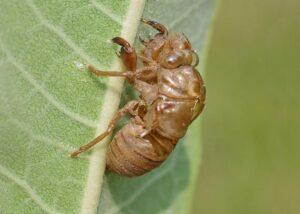
2. Nymph Stage
Small nymphs hatch from eggs in 6-7 weeks and fall on the ground. They burrow into the soil, seeking the roots of trees. They molt across several instars as they burrow several feet. When fully developed, they burrow out of the ground at night, leaving a 0.5-inch hole behind. They then climb on low plants, tree trunks, and other objects. This stage lasts for around 3 years.
3. Adult Stage
The adults come out from the last nymphal stage through a crack on the back in mid-summer. They leave the light brown cast skin behind. They live for 5-6 weeks, and the males sing to attract females for mating from August to late September or early October. They fall to the ground and die after breeding and egg-laying is complete.
Source
objects.liquidweb.services, m.espacepourlavie.ca, bugguide.net, uwm.edu, lh5.ggpht.com




